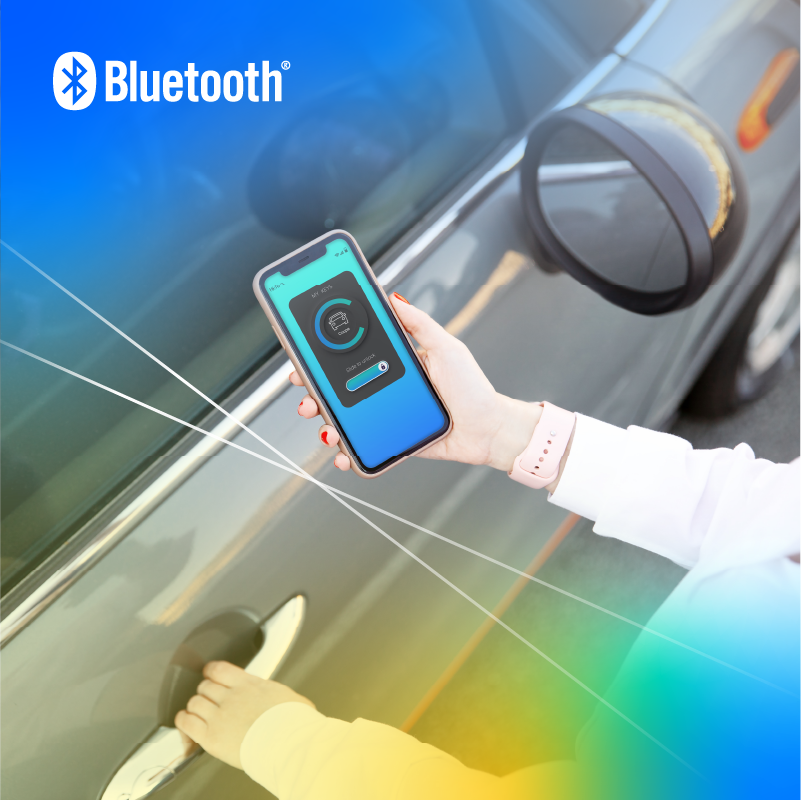A global semiconductor company that designs, manufactures, and sells analog and embedded processing chips, Texas Instruments (TI) shares the Bluetooth Special Interest Group’s (SIG) vision of creating a better world through connection. TI’s semiconductor chips power a wide range of electronic systems, from electric vehicles and industrial robots to solar panels and satellites, to advance innovation across industries.
I had a chance to meet with Peder Rand, director of ecosystem partnerships, standard alliances, and technology strategy for the connectivity business unit at Texas Instruments. Rand provided great insight into the impact Bluetooth® Channel Sounding will have in the automotive market and beyond.
Q&A with Peder Rand from Texas Instruments

How is your organization contributing to the advancement of wireless innovation and the Bluetooth SIG vision of creating a better world through technology?
Texas Instruments (TI) has been a long-standing contributor to the Bluetooth SIG Working Groups, offering technical expertise and intellectual property to help shape specifications that meet key industry requirements, including security, cost, and power consumption. In the automotive space, TI has collaborated with manufacturers and tier 1 suppliers to develop wireless connectivity solutions that leverage Bluetooth® features to support the implementation of digital key systems across major automotive regions.
What challenges exist in ensuring interoperability for Bluetooth digital keys to work across multiple devices and vehicle brands, and how does Bluetooth help address them?
Bluetooth LE’s success is built on its universal interoperability, which is a fundamental requirement for digital key systems, and TI is committed to participating in the Bluetooth SIG specification process and UnPlugFests to help ensure integration across devices and vehicle brands.
Given the importance of a seamless user experience, how does Bluetooth Channel Sounding ensure fast and reliable authentication for digital key solutions?
The Bluetooth protocol includes features to ensure reliable connections and mitigate environmental factors. Bluetooth Channel Sounding leverages frequency hopping by measuring phase changes over a range of frequencies. Even when some frequency measurements are lost because of interference, it is still possible to generate a good estimation of distance. Radio algorithms that pick the shortest path for distance measurements can mostly mitigate multipath effects. Additionally, multiple antennas provide diversity of the observation points, where the selection of the best antenna path is later deferred to high-level algorithms. However, in some cases, assuming that one of the devices is moving around can mitigate the need for multiple antennas.
One of the more challenging scenarios for car or other access control is the driver approaching the door with the smartphone in their back pocket. The body provides significant attenuation in the direct path. In this type of scenario, machine learning can significantly improve the accuracy achieved from the available data.

How does Bluetooth® Channel Sounding complement other ranging technologies, such as ultra-wideband (UWB) and near-field communication (NFC)?
Rather than viewing ultra-wideband and near-field communication as competitors, we see them as complementary tools in a comprehensive digital key ecosystem.
Both the device and protocol need to be well tested and reliable. Corner cases, such as when the initiator and reflector are barely in range, require special consideration. For automotive-grade stacks, there is strict rigor around testing and release processes, which helps ensure a seamless user experience. Additionally, interference and multipath effects need mitigation.
The measurement and calculation of position must be fast enough for the system to react to the user’s movements. From a protocol perspective, the parameters between two devices that already know each other, such as a user’s smartphone and their vehicle, store relevant parameters of the other node, including supported modes and physical layer formats. This increases connection speeds when they come within range of each other.
As a foundational technology, Bluetooth® LE plays a critical role in access control solutions, working seamlessly alongside other ranging technologies like UWB and NFC to meet the diverse performance and reliability requirements of digital key ecosystems.
Beyond automotive digital keys, what other applications can benefit from Bluetooth Channel Sounding?
The digital key revolution is expanding beyond automotive applications into everyday environments. As consumers experience the convenience of keyless car access, there’s a natural progression toward similar functionality in home and business entry systems. The residential market particularly stands ready for transformation; imagine approaching your front door and having it automatically unlock with the same experience you have come to expect from your vehicle.
Beyond access control, Bluetooth® Channel Sounding offers advantages for asset tracking applications. Its combination of precise positioning and power efficiency makes it suitable for small, battery-operated trackers. The technology’s built-in security and privacy features also provide protection against unauthorized tracking.
In fixed infrastructures, Bluetooth® Channel Sounding can determine the relative positions of devices in homes and businesses, opening up possibilities for smart building automation and space optimization.
The beauty of Bluetooth® Channel Sounding lies in its ability to add positioning capabilities to existing Bluetooth devices with minimal additional cost, making it likely to achieve widespread adoption across multiple sectors.
As the automotive industry moves toward more connected and autonomous vehicles, how do you see Bluetooth technology evolving to support broader use cases beyond digital key?
We already see Bluetooth technology leveraging the infrastructure of car-side anchors from digital keys to read tire pressure monitoring systems.
Beyond that, we will likely see Bluetooth connectivity used to reduce the cost, weight, and production complexity of the wire harnesses that carry power and communication inside the car. It would be relatively easy to replace cabled communication between seats and mirrors and their controls with a Bluetooth link.